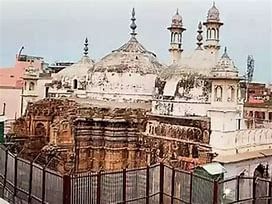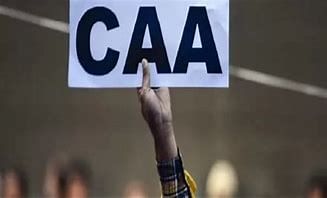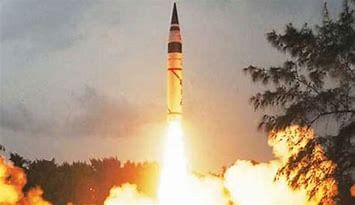UPSC Daily Current Affairs- 12th March 2024 | Current Affairs & Hindu Analysis: Daily, Weekly & Monthly PDF Download
GS-I
ASI told to conduct Scientific Survey of Bhojshala Complex
Subject: Art and Culture

Why in News?
The Bhojshala Temple-Kamal Maula Mosque complex in Dhar district, an ASI-protected 11th-century monument, has been a subject of contention regarding its nature and usage.
- To address this, the Indore Bench of the Madhya Pradesh High Court has directed the Archaeological Survey of India (ASI) to conduct a scientific survey of the site.
About Bhojshala Complex
| Details | |
| Location | Dhar district, Madhya Pradesh, India |
| Historical Background | Established by Raja Bhoj, the greatest ruler of the Parmar dynasty, as an educational institute |
| Date of Establishment | 11th century |
| Transformation | Originally a Goddess Wagdevi (Saraswati temple), later converted into Kamal Maulana Mosque by Muslim rulers |
| Architectural Features | Large open courtyard (Mahaāyata) Verandah with decorated pillars (Sthāpanā)Prayer hall with intricately carved ceilings (Shikharākāra) |
| Inscriptions | Two hymns depicting the Karmavatar of Vishnu (Avatār) Sarpabandha pillar inscriptions with Sanskrit alphabet and grammatical rules (Vyākaraṇa) |
| Archaeological Significance | Protected by the Archaeological Survey of India (ASI) as an 11th-century monument |
Controversy over Bhojshala Complex
- Religious Claims: Hindus view the location as the temple dedicated to Goddess Wagdevi (Saraswati), whereas Muslims consider it to be the Kamal Maula mosque.
- Usage Agreement: The Archaeological Survey of India (ASI) permits Hindus to conduct prayers on Tuesdays and during Basant Panchami, while Muslims are allowed to offer namaz on Fridays.
Recent Developments
- Basant Panchami Dispute: A recent order allowing Hindus to worship during Basant Panchami hours led to discontent among some Right-wing activists.
- Demand for Extended Access: Hindu groups demand all-day access to the shrine on such occasions, leading to protests and petitions filed in the High Court.
Source: The Hindu
GS-II
Citizenship (Amendment) Act, 2019
Subject: Polity and Governance

Why in News?
Ministry of Home Affairs (MHA) recently notified the Citizenship Amendment Rules, 2024.
About Citizenship (Amendment) Act, 2019:
- The Citizenship Amendment Act (CAA) alters the Citizenship Act of 1955, offering a route to Indian citizenship for specific religious groups from neighboring Muslim-majority countries, namely Hindus, Sikhs, Christians, Buddhists, Jains, and Parsis who migrated before December 31, 2014.
- CAA facilitates accelerated citizenship for migrants who arrived in India before December 31, 2014, and faced religious persecution in their home countries.
- It reduces the residency requirement for naturalization from twelve years to six years for eligible migrants.
- Certain areas such as the tribal regions of Assam, Meghalaya, Mizoram, and Tripura, as outlined in the Sixth Schedule of the Constitution, are exempt from the CAA.
- OCI (Overseas Citizen of India) registration can be revoked if the cardholder violates provisions of the Citizenship Act or other relevant laws.
Source: The Hindu
GS-III
INS Tushil
Subject: Defense and Security

Why in News?
INS Tushil, India's latest naval asset, initiated its sea trials from Russia's Baltiysk naval base recently.
About INS Tushil
- INS Tushil is the inaugural Krivak-III frigate obtained as part of Project 11356M.
- Project 11356M: In October 2016, India signed an Inter-Governmental Agreement (IGA) with Russia to procure or construct four additional Admiral Grigorovich-class (Project 11356M) frigates, two from Russia and two in India through a collaborative effort between Russian and Indian shipyards.
- The Talwar-class frigates, also known as Project 11356, represent a series of stealth-guided missile frigates tailored to meet the diverse requirements of Indian Navy warfare across air, surface, and sub-surface dimensions.
- Features:
- These vessels incorporate "stealth technology" to minimize radar and underwater noise signatures.
- Major Indian-supplied equipment includes surface-to-surface missiles, sonar systems, surface surveillance radar, communication suites, and anti-submarine warfare systems, alongside Russian surface-to-air missiles and gun mounts.
- Designed to engage submarines and warships in brown and blue waters while defending against air threats both independently and as part of a naval formation.
- Specifications: Displacement of 3620 tons, length of 124.8 meters, top speed of 30 knots, and cruising range of 4850 miles.
Source: Republic World
Anthropocene Epoch
Subject: Science and Technology

Why in News?
Scientists have voted against a proposal to declare a new geological epoch called the Anthropocene to reflect how profoundly human activity has altered the planet.
- Anthropocene Epoch:
- Unofficial geologic time unit representing the period in Earth's history where human activity significantly impacts the planet's climate and ecosystems.
- Term derived from Greek roots meaning "man" and "new," coined by Eugene Stormer and Paul Crutzen in 2000.
- Associated with various phenomena including global warming, sea-level rise, ocean acidification, soil erosion, heat waves, and biosphere degradation.
- Geological Time Scale:
- Earth's history segmented into eons, eras, periods, epochs, and ages based on rock layers and fossils, known as stratigraphy.
- Organisms within specific parts of the geologic record characterize different time periods.
- Current Epoch (Holocene):
- Officially designated epoch that began 11,700 years ago after the last major ice age.
- Debate:
- Ongoing scientific discussion regarding the distinction between Anthropocene and Holocene.
- Term not formally adopted by the International Union of Geological Sciences (IUGS), responsible for defining epochs.
- Central question for the IUGS is whether human-induced changes to Earth's system are evident in rock strata.
Source: CNN
Minimum Alternate Tax (MAT)
Subject: Economy

Why in News?
The Income Tax Appellate Tribunal (ITAT) recently observed that the assessee was entitled to claim credit for Minimum Alternate Tax (MAT) under the Vivad se Vishwas (VSV) Scheme.
- Minimum Alternate Tax (MAT):
- Provision within the Income Tax Act of India, primarily targeting companies to ensure those with substantial book profits but minimal tax payments due to exemptions face a minimum tax obligation.
- Aimed at combating tax avoidance by companies manipulating financial statements to artificially reduce taxable income.
- Applicable to all companies, including foreign entities, except those exempted under Section 10AA relating to Special Economic Zones (SEZs).
- Companies required to pay corporate tax based on the higher of two calculations: normal tax liability or MAT, computed at 15% on book profit plus cess and surcharge.
- MAT calculated on "book profits," distinct from taxable profits under regular tax provisions.
- MAT Credit: Difference between MAT and normal tax liability when MAT exceeds the latter.
- Vivad se Vishwas (VSV) Scheme:
- Direct tax initiative introduced by the Indian Government in 2020 to resolve disputes between taxpayers and the income tax department, aiming to reduce tax-related litigation.
- Scheme entails complete waiver of interest and penalties associated with disputed tax amounts upon final settlement.
- Set time limit for tax payments under the scheme.
Source: Tax Scan
Mission Divyastra: Agni-5 Missile with MIRV Technology
Subject: Defence and Security

Why in News?
India’s recent successful testing of an Agni-5 Missile equipped with Multiple Independently Targetable Re-entry Vehicle (MIRV) technology with multiple warhead capabilities, termed Mission Divyastra, marks a significant milestone in the nation’s defense capabilities.
What are Agni Missiles?
- Agni missiles are surface-to-surface ballistic missiles capable of carrying nuclear warheads over long distances.
- The Agni-I, the inaugural missile in the series, was created as part of the Integrated Guided Missile Development Program (IGMDP) and underwent successful testing in 1989.
- Recognizing its strategic significance, the Agni missile program was subsequently spun off from the IGMDP.
- India's defence budget designated it as a special program, ensuring ample funding for its ongoing development and enhancement.
Variants of Agni missiles
- Agni I: Classified as a Medium Range Ballistic Missile, boasting a range spanning from 700 to 800 kilometers.
- Agni II: Another Medium Range Ballistic Missile, distinguished by its extended range surpassing 2000 kilometers.
- Agni III: Categorized as an Inter-Medium Range Ballistic Missile, capable of reaching distances exceeding 2,500 kilometers.
- Agni IV: Positioned as an Inter-Medium Range Ballistic Missile, with a range surpassing 3,500 kilometers, and notable for its capacity to launch from a road mobile platform.
- Agni-V: Currently the pinnacle of the Agni series, designated as an Inter-Continental Ballistic Missile (ICBM), boasting an impressive range exceeding 5,000 kilometers.
- Agni-VI: The epitome of the Agni series, identified as an ICBM with an extensive range between 11,000 to 12,000 kilometers, showcasing its formidable long-range capabilities.
About Agni-5 Missiles
- Indigenous Development: Agni missiles, developed by the Defence Research and Development Organisation (DRDO), have been integral to India’s defense arsenal since the early 1990s.
- MIRV Technology: The latest variant of Agni incorporates Multiple Independently Targetable Re-entry Vehicle (MIRV) technology, a sophisticated capability possessed by only a handful of countries globally.
Developments in MIRV Technology
- Targeting Versatility: MIRV technology enables a single missile to target multiple locations, potentially hundreds of kilometers apart, significantly enhancing its operational effectiveness.
- Range and Strategic Focus: Agni, equipped with nuclear warheads, boasts a range exceeding 5,000 km, primarily aimed at countering threats from China.
- Limited MIRV-Equipped Nations: Currently, major nations possessing MIRV-equipped missiles include the United States, Russia, China, France, and the United Kingdom, with emerging capabilities in Pakistan and Israel.
- Complex Technology: Developing MIRV technology requires miniaturization of warheads, independent guidance systems, and sequential release mechanisms, making it a challenging endeavor.
Strategic Significance of the Mission Divyastra
- Versatile Strike Capabilities: MIRV-equipped missiles enable simultaneous strikes on multiple targets, overwhelming enemy defenses and maximizing damage potential.
- Deterrence and Defense Penetration: These missiles pose a significant challenge to missile defense systems, as multiple warheads with independent trajectories can thwart interception efforts.
- Strategic Balance and Deterrence: For nations like India with a no-first-use policy, MIRV technology enhances the credibility of response strikes, serving as a potent deterrent against aggression.
Source: The Hindu
India’s First Cattle Dung-based Bio-CNG Station in Gujarat
Subject: Economy

Why in News?
Nestled along the Deesa-Tharad highway in Gujarat’s Banaskantha district lies India’s pioneering gas-filling station, seemingly unremarkable at first glance.
- However, this station, powered by cattle and buffalo dung, marks a significant leap in renewable energy innovation.
Fuel Production from Dung: A Technological Marvel
- Innovative Concept: The 'BioCNG' outlet in Dama village, Deesa taluka, is India's unique gas-filling station powered by cattle and buffalo dung.
- Daily Operations: The outlet caters to 90-100 vehicles each day, distributing 550-600 kg of gas produced from processing 40 tonnes of dung at a nearby plant.
- Dung Utilization: Approximately 40,000 kg of dung are collected daily from 2,700-2,800 animals owned by 140-150 farmers residing within a 10 km radius of the plant.
Understanding the Dung-to-Fuel Process
- Biogas Production: Fresh dung, rich in methane and water, undergoes anaerobic digestion in a sealed vessel, yielding raw biogas.
- Purification Process: The raw biogas undergoes purification to remove impurities like CO2 and H2S, resulting in compressed biogas (CBG) suitable for vehicle use.
- Production Output: From 40 tonnes of dung, the plant generates 2,000 cubic meters of raw biogas containing 55-60% methane, 35-45% CO2, and 1-2% hydrogen sulphide (H2S) and moisture.
Dual Benefits: Fuel and Fertilizer
- Fuel Value: Compressed Bio-Gas (CBG) is retailed at the station for Rs 72 per kilogram, presenting a sustainable and environmentally friendly substitute for conventional fuels.
- Fertilizer Production: The production process also generates bio-fertilizers, enhancing soil fertility and creating an extra revenue channel for farmers.
- Fertilizer Sales: The Banaskantha Union distributes 8,000-10,000 kilograms of bio-fertilizers daily, with Phosphate-Rich Organic Manure (PROM) fetching Rs 15-16 per kilogram and compost priced at Rs 8-10 per kilogram.
Significance: Decentralized Model for Sustainable Agriculture
- Community Involvement: The initiative engages local farmers, who supply dung to the plant, fostering community participation and economic empowerment.
- Replicability and Scalability: The model holds potential for replication across districts and states, offering a scalable solution for energy and agricultural needs.
- Investment Plans: The Banaskantha Union plans to commission four additional 100-tonnes capacity plants by 2025, with a total investment of Rs 230 crore.
Conclusion
- The establishment of India’s first dung-based gas-filling station represents a significant stride towards renewable energy adoption and agricultural sustainability.
- As technology continues to evolve, decentralized models like these hold promise for transforming rural economies while mitigating environmental impact.
- With ongoing support and investment, such initiatives can pave the way for a greener and more resilient future.
Source: Indian Express
|
59 videos|5388 docs|1140 tests
|
FAQs on UPSC Daily Current Affairs- 12th March 2024 - Current Affairs & Hindu Analysis: Daily, Weekly & Monthly
| 1. What is the purpose of ASI conducting a Scientific Survey of the Bhojshala Complex? |  |
| 2. What is the Citizenship (Amendment) Act, 2019? |  |
| 3. What is the significance of Mission Divyastra: Agni-5 Missile with MIRV Technology? |  |
| 4. What is the Anthropocene Epoch? |  |
| 5. What is the purpose of India’s First Cattle Dung-based Bio-CNG Station in Gujarat? |  |





















